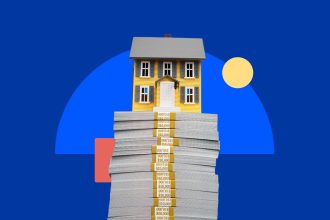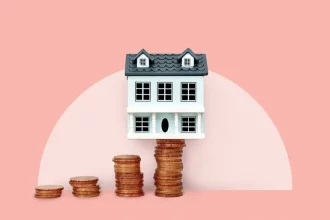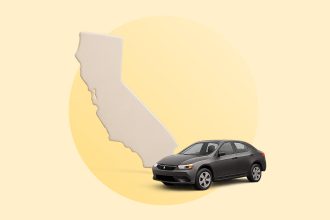Image by GettyImages; Illustration by Bankrate
It’s well-documented that we live in a world of severe income inequality and have made little progress in closing the racial wealth gap. There’s a related and similarly unjust fact of our present times: Your income and credit determine how easy (or difficult) it is to climb out of debt.
Just look at research published in April from two national lenders.
- Santander reported more than three-quarters of middle-income Americans “believe they are on the right financial track,” staying “current on their bills.”
- Achieve noted that less than a quarter (19 percent) of its survey respondents who have sub-620 credit scores feel their debt is manageable.
No wonder. The lower your income and credit, the fewer (good) options you have to get out of a funk.
We have a debt inequality problem
This isn’t exactly breaking news, but it seems to be getting worse. Consider that more than one in 10 credit card holders (11 percent) made only the minimum payment toward their outstanding balance in the fourth quarter of 2024, an unfortunate high since the Federal Reserve Bank of Philadelphia began tracking this data point 12 years ago.
Lower-income earners don’t have a monopoly on amassing credit card debt. But higher-income-and-credit individuals and families have more time to plan their way out of it.
The Santander survey showed that of the 53 percent of middle-income respondents who were considering taking out a personal loan, large majorities said they were tracking interest rates; would be more likely to apply for a debt consolidation loan if rates come down; and plan to take out such a loan in the next 12 months.
Anyone who has significant debt and less income knows that waiting around, perhaps for lower rates, isn’t a realistic option. Many consumers need solutions right now. After all, consumer debt is at an all-time high, particularly so for the subprime segment highlighted in the Achieve survey.
About 61 percent of respondents who self-reported having excellent credit (scores above 760) said their debt is “manageable.” Those who estimated having poor credit (below 620), only 19 percent said the same.
Not all subprime borrowers report struggling
Other recent research is more optimistic. Experian published an April survey highlighting strategies used by consumers who paid off what they’d previously considered to be “unmanageable” debt:
- Working a second job or side hustle (36 percent)
- Employing the snowball debt repayment method (26 percent)
- Using a budgeting app (23 percent)
“I am encouraged by the number of consumers who said that they have paid off their unmanageable debt,” Rod Griffin, senior director of public education and advocacy at Experian, tells Bankrate. “There is a lot of uncertainty right now, and it’s easy to focus on the negatives, but consumers are still taking steps to reach their financial goals.”
Call me pessimistic, but the rosier Experian survey leaves out mention of their respondents’ credit scores (Experian is a credit bureau after all). Still, it found that nearly a quarter of respondents (23 percent) reported a “Cinderella story” of fixing their personal finances. Also, 45 percent said paying off debt improved their lives.
What to do if you’re struggling with debt
So, a happy ending is possible, even if your story’s arc is highly dependent on where you stand today. If you have good credit, for instance, you might jump right into shopping around for a debt consolidation loan.
Paying off debt with low income or credit, on the other hand, might feel like climbing a mountain barefoot.
When people are overwhelmed and about to miss bill payments, they often don’t know what steps to take — but the right strategy in that moment can make a major difference. We want consumers to know they’re not alone, and that help is available.
Brad Stroh, Achieve co-founder and co-CEO
Consider these steps to get started:
Dial your lenders
If you might miss a forthcoming payment — or perhaps you’re already delinquent — start the conversation with your lender. Explain your circumstances and learn about potential options. Personal loan lender Discover, for example, allows some struggling customers to temporarily decrease their monthly dues, extend their repayment term or remove a delinquency status by making three straight on-time payments.
As TransUnion Senior Vice President of Consumer Lending Joshua Turnbull tells Bankrate, “It is in everybody’s best interest that you have that awkward conversation with the lender. And I think people are often surprised how willing lenders are to work with borrowers to find a way to keep that from becoming a fraught situation.”
Ask for help
Going it alone is harder. So, besides calling on your lender or loan servicer, you might consult a nonprofit credit counseling agency representative who could recommend a debt management plan or a debt lawyer who’d suggest debt settlement, to name a couple of common examples.
Update and optimize your budget
It might feel like it’s too late to start tracking your spending, but setting up a budget will help you organize your debt accounts and prioritize them alongside other drains on your earnings.
Choose a repayment strategy
Like the Experian survey respondents who leveraged the debt snowball method (or paying off your lowest balance before “snowballing” your motivation to pay down higher balances), you have a good or least-bad repayment option out there somewhere. You just have to find it.
Using a personal loan to pay off credit card debt, for example, might be a good first step if you want a single monthly payment and have a cosigner or co-borrower who can help you qualify for a lower rate.
Stay on track
The snowball method might be best for you if you need an occasional pick-me-up during repayment. But no matter which route you choose toward a zero balance, motivate yourself and stay engaged. Some borrowers have found success with rewarding themselves each time they hit a payoff milestone, for example. Whatever works for you, stick to it.
Read the full article here
















